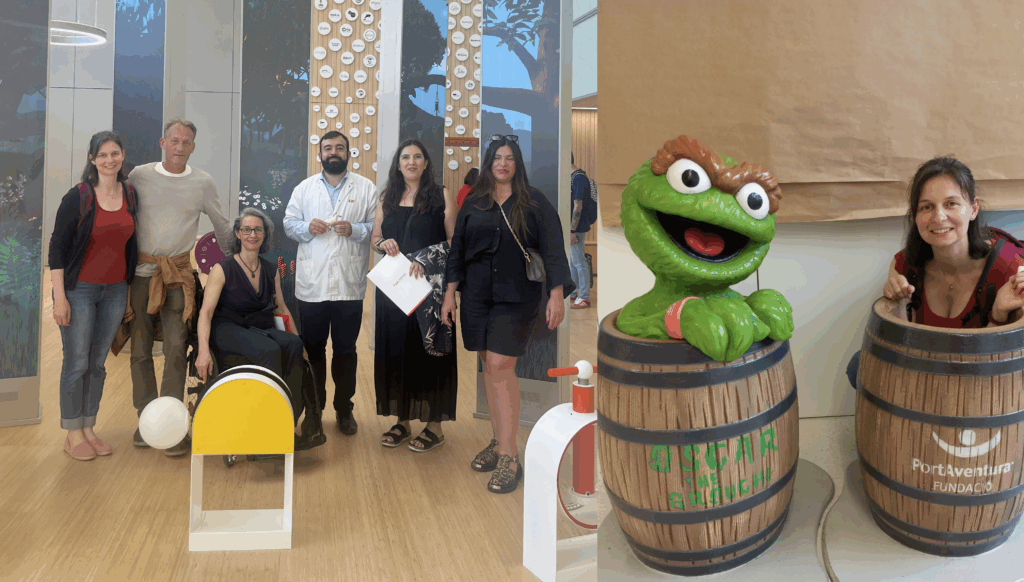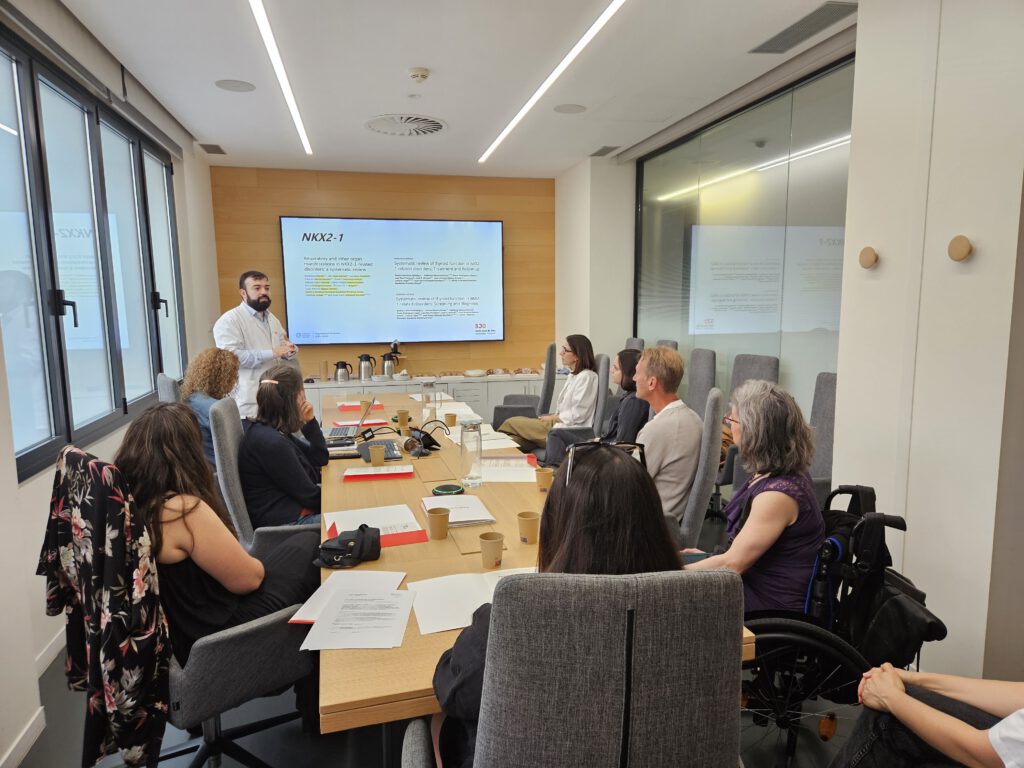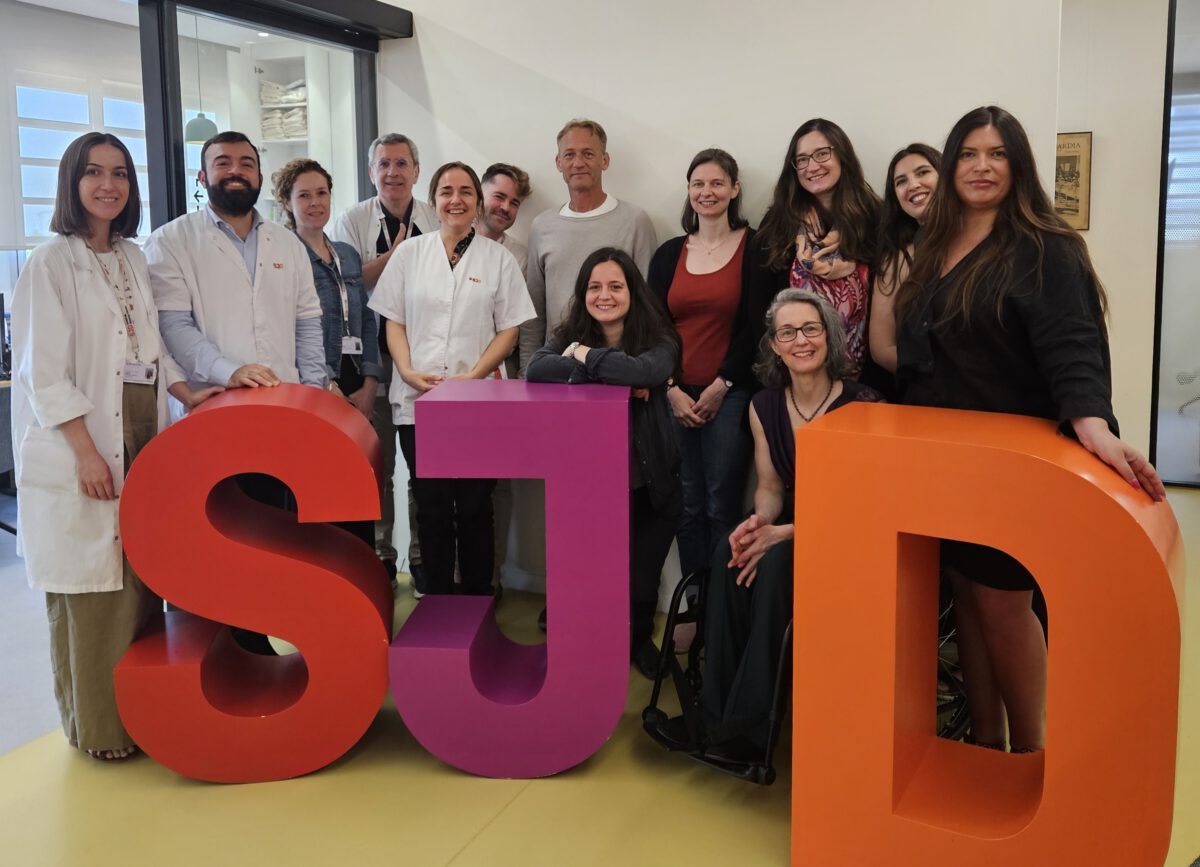Having a rare disease means spending a lot of time around doctors and hospitals. Places, that even adults will not describe as comfortable. Now, imagine how children will feel in such hospital situations, when not grasping the full extent of their condition but still having to wait for hours, sitting still and not knowing what is coming next. So, from a child’s perspective hospitals can be quite scary. But not in Sant Joan de Déu Children’s Hospital, Barcelona (HSJD) – where everything is about Hospitality, as ERN-RND clinician Juan Dario Ortigoza Escobar, who is a pediatric neurologist specialized in movement disorders and the organizer of our visit, explained to us.
One year after our ePAG visited the Center for Rare Movement Disorders Innsbruck (CRMDI) at the Medical University of Innsbruck, we found ourselves in Barcelona at another expert center in the ERN-RND network: Children’s Hospital Sant Joan de Déu (HSJD), a private, non-profit institution dedicated to public service. It did not disappoint. This hospital is truly exceptional — a model of what healthcare institutions should aspire to be.

From the moment we arrived, it was clear that the vibrant videos and curated online images of the hospital reflect its true atmosphere. The colors throughout the building are bright and cheerful. The energy is positive in every corner. Every person we encountered — without exception — greeted us with a smile. Offices were full of greenery. Near the entrance, brightly colored lines guide families to key departments: Rehabilitation, Laboratory, Radiology, and the Emergency Department. Each line is paired with an animal sound to help orient children — a simple but powerful example of thoughtful, patient-centered design. And a lot of various opportunities to play and distractions for children, while having to wait or during examinations – be it sliding from the upper to the lower floor or diving into the deep space when entering an MRI (find more impressions of the hospital in this video).
The main objective of our visit was to understand how HSJD structures its patient-centered care model, engages in cross-border collaborations, and meaningfully involves patients and families in decision-making processes. We also explored how the Rare Disease Center and Patient Experience Center contribute to delivering high-quality, equitable care for children with rare neurological conditions.

Presentations and Key Takeaways
We attended four insightful presentations and toured the hospital:
- Dr. Ortigoza – ERN-RND at HSJD & Collaborative Projects
HSJD sees 322,846 outpatient visits, 16,323 surgeries, 170,131 emergency visits, and over 3,000 births annually. The hospital’s most valuable ERN activities include: clinical case discussions via CPMS, guideline development and update of clinical rating scales, collaborative research and registries, and cross-ERN webinars. - Roser Francisco – HSJD’s Accreditation in ERNs
HSJD is accredited as expert center at regional, national and European level. HSJD is a member of 21 of the 24 ERNs and specializes in pediatric and maternity care — a remarkable achievement and testament to their commitment to excellence. - Joan Vinyets Rejón – Patient Experience at HSJD
The Department of Quality and Patient Experience strives for excellence in care by placing patients and families at the center and working collaboratively across all departments. - Dr. Antonio Martinez Montseny – The UNICAS Project: Coordinated Rare Disease Care
The UNICAS network, now including 30 hospitals across Spain, was initiated by HSJD with FEDER and is now led by the Ministry of Health. It aims to promote equity in care for pediatric rare diseases through coordinated, nationwide collaboration.
Dr. Ortigoza also highlighted a major challenge: the need to educate primary care pediatric neurologists to recognize early signs of rare diseases and refer patients to Centros, Servicios y Unidades de Referencia (CSUR) — specialized centers for advanced diagnosis and treatment.
What stood out most is how seriously HSJD takes the patient voice. The hospital’s commitment to truly inclusive, thoughtful care is evident at every level. It exemplifies the Gold Standard in pediatric healthcare — not just in technology or structure, but in values, empathy, and shared purpose.
Report writen by Lori Renna Linton, member of the ERN-RND ePAG group

